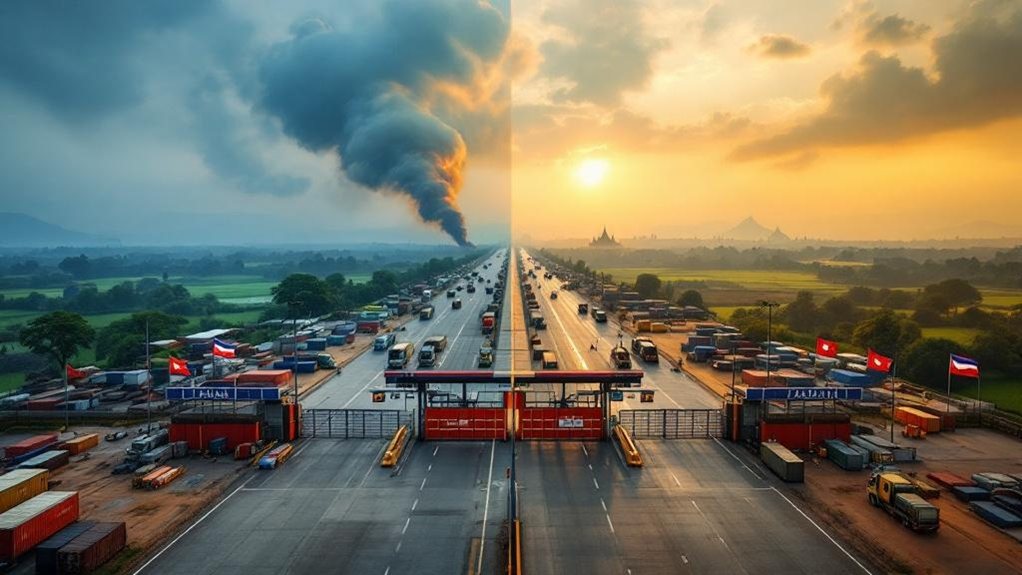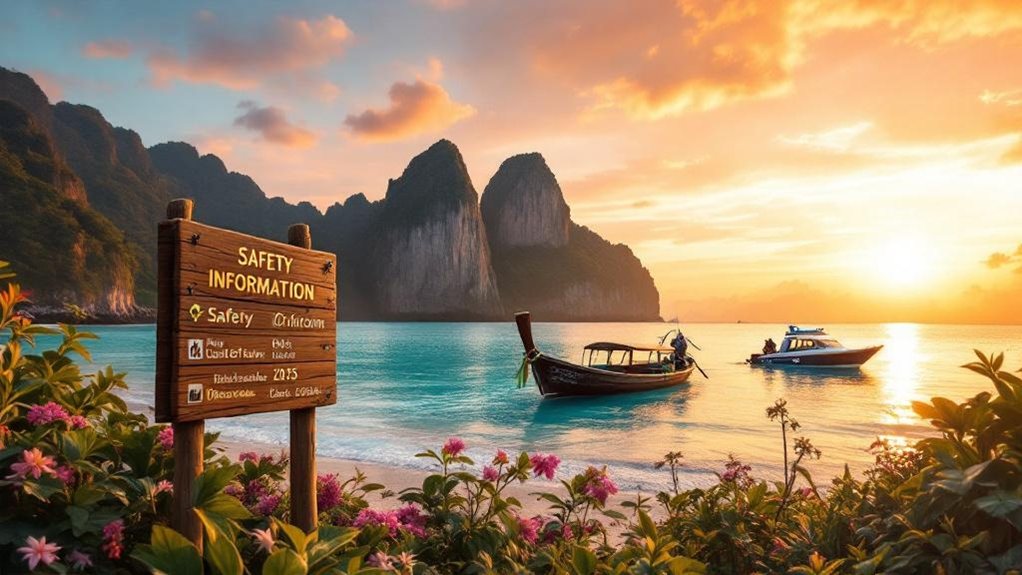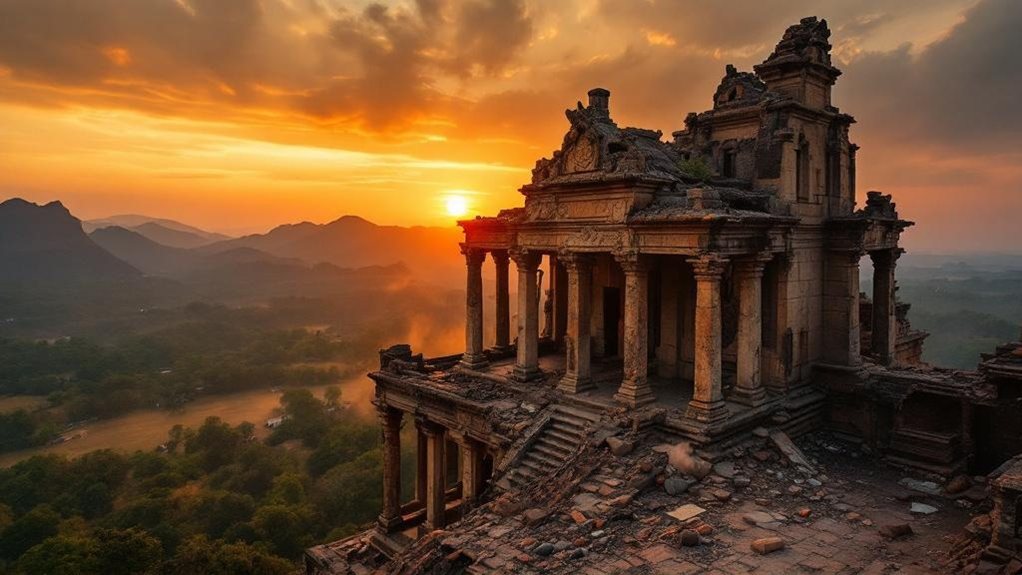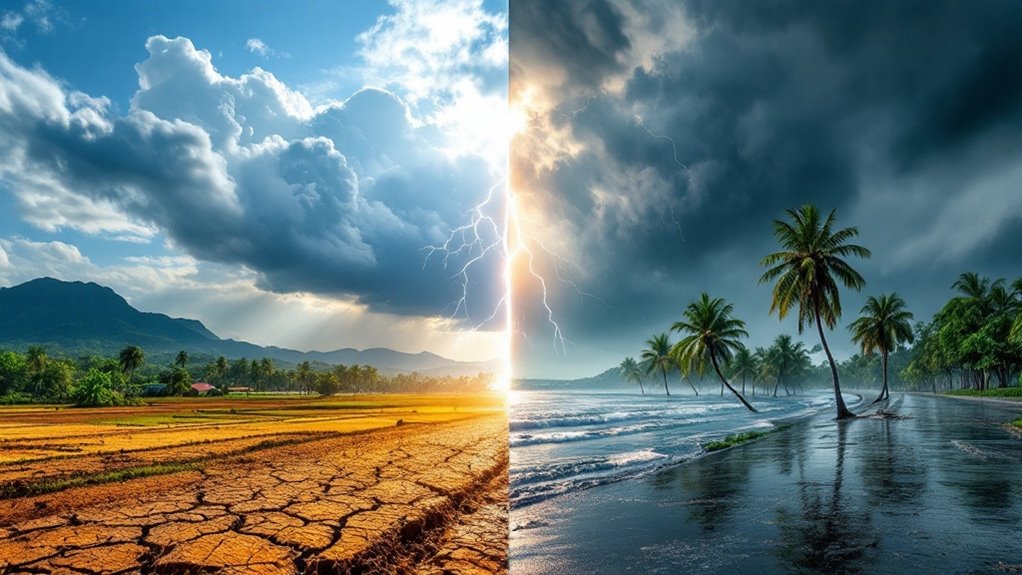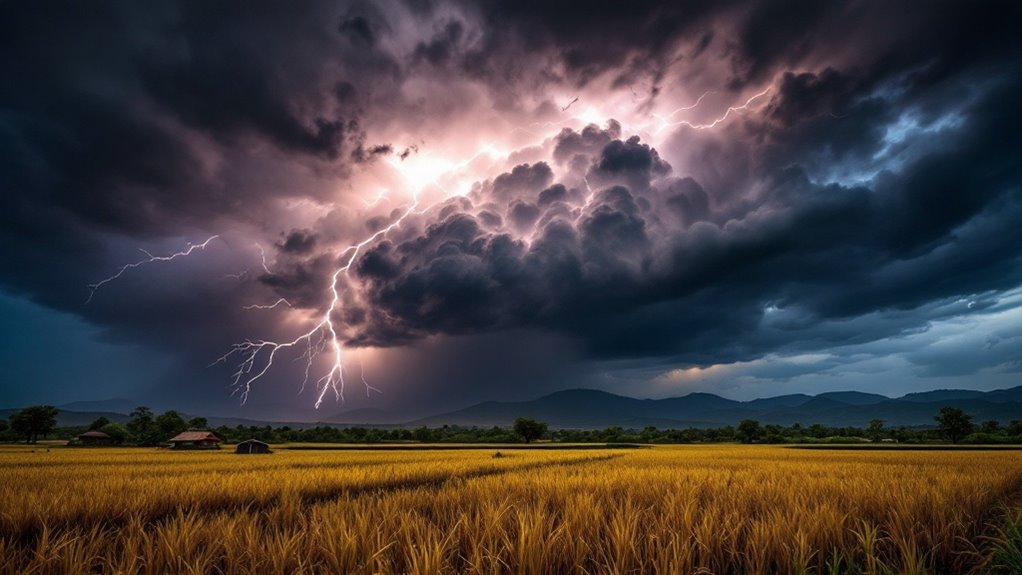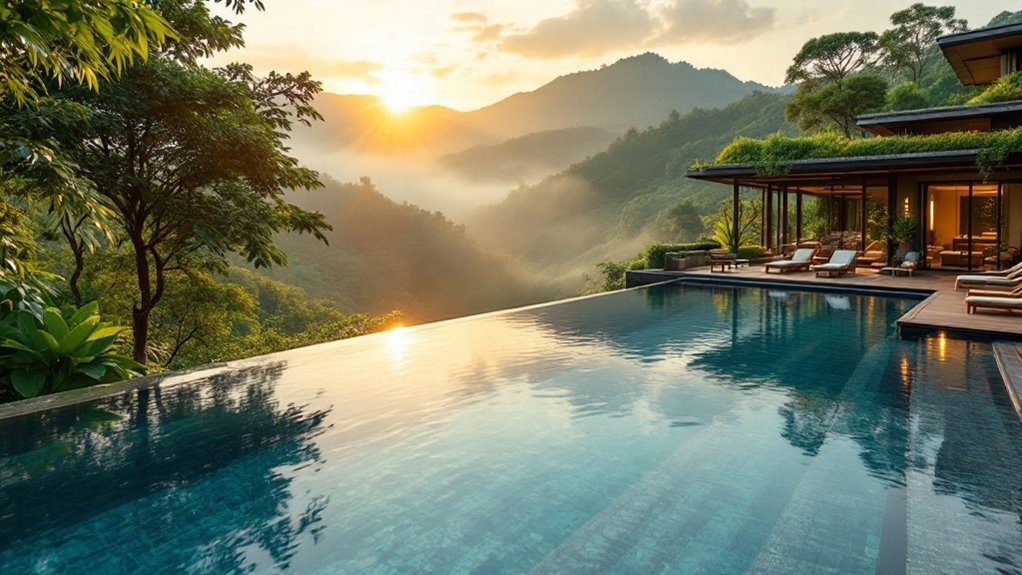In response to escalating military clashes along the Thai-Cambodian border, President Trump has suspended trade deal talks with Thailand and Cambodia. This measure links to ongoing violence, urging both nations towards a ceasefire. Both countries face elevated tariffs of 36% from August 1, 2025, if conflicts persist. This suspension echoes the US strategy of using economic pressure to foster peace, reminiscent of efforts in other regions. Discover further insights into this diplomatic approach and its broader implications.
In a decisive move to influence peace in Southeast Asia, President Trump suspended trade deal negotiations with Thailand and Cambodia amid their ongoing border conflict. This action was taken after Trump made direct calls to Cambodian Prime Minister Hun Manet and Thai acting Prime Minister Phumtham Wechayachai following a United Nations Security Council meeting. The suspension of trade talks is contingent upon the achievement of a ceasefire between the two nations, with the US insisting that both countries engage in peace negotiations and cease hostilities. With this in mind, Thailand’s Finance Minister has expressed hope for future tariff adjustments that align with ASEAN nations, highlighting the importance of peace for building durable economic partnerships. The trade negotiations had progressed to the point where Thailand submitted its final tariff proposals to the US Trade Representative. However, the suspension has now halted this process. Under the current situation, Thai exports face a 36% US tariff, while Cambodia’s tariffs, recently reduced from 49% to 36%, will remain elevated. Trump’s tariff strategy aims to encourage both countries to prioritize peace over economic interests. Should the border conflict persist, these tariffs will continue unchanged from August 1, 2025, applying economic pressure on both countries to resolve their differences.
President Trump has framed this trade deal suspension as a strategic tool to simplify the complex situation and promote peace, drawing parallels to previous US-mediated ceasefires such as the India-Pakistan agreement earlier in 2025. Through public statements, including those on Truth Social, Trump emphasized the necessity of an end to hostilities and the initiation of peace talks. This diplomatic strategy underscores the US’s unwillingness to finalize trade agreements without a resolution to the ongoing conflict.
Despite US pressure, military clashes have continued along the approximately 800 km Thai-Cambodian border. Reports indicate heavy artillery shelling and attacks on civilian areas, including historical sites like the Ta Muen Thom temple. These hostilities have led to the closure of border crossings and the recall of ambassadors, escalating diplomatic tensions further.
In response, President Trump has tasked Deputy Foreign Minister Prak Sokhonn and Secretary of State Marco Rubio with coordinating ceasefire efforts. The US remains committed to facilitating peace talks and promoting regional stability. Meanwhile, the humanitarian impact of the conflict is severe, with at least 33 deaths and over 168,000 refugees and displaced persons affected by the escalation.
